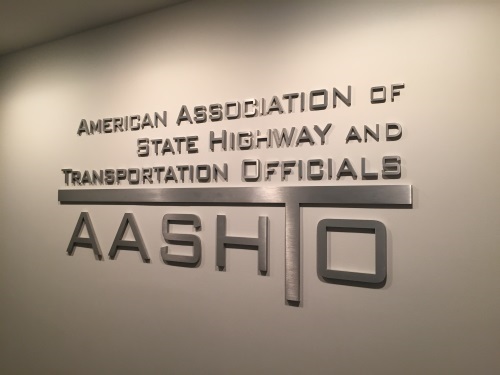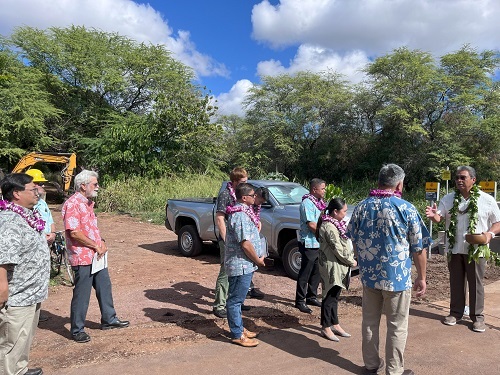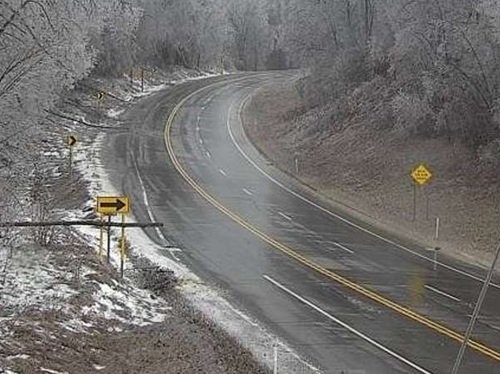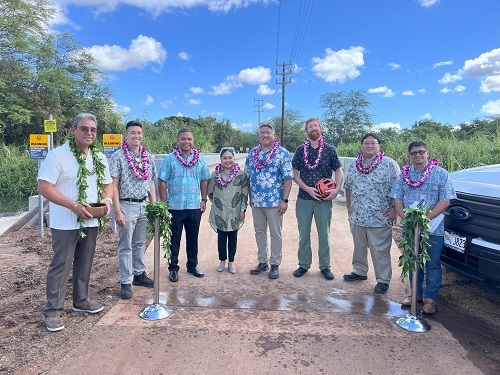The Hawaii Department of Transportation recently completed construction of the $15.7 million Leeward Bikeway, a dedicated bikeway within the former Oahu Railway & Land Company right-of-way between Philippine Sea Road in ‘Ewa and Waipahu Depot Street.
[Above photo by the Hawaii DOT]
The new 3.5-mile path links together the previously unconnected West Loch Bike Path and the existing Pearl Harbor Historic Trail. Work included construction of 723 linear feet of retaining wall; utility relocation; demolition and construction of new bridge structures at Waikele Stream and Kapakahi Stream; paving the nine-to-10-foot path with asphalt concrete; and installation of concrete posts to prevent the use of the bikeway by motorized vehicles.

[Editor’s note: State departments of transportation across the country develop bicycle routes, which the American Association of State Highway and Transportation Officials then officially designates within the U.S. States Bicycle Route System or USBRS. In February 2021, AASHTO and Adventure Cycling signed a memorandum of understanding or MOU to formalize their now 17-year partnership to create a national 50,000-mile bicycle route network. Twice each year, AASHTO’s U.S. Route Numbering Special Committee reviews and recommends to the AASHTO Board of Directors revisions, additions, or deletions to the U.S. numbered routes and Interstate Highway System. The special committee also reviews and recommends the approval of new and revised U.S. bicycle trails that are critical to the expansion of the USBRS.]
The new bikeway is also compliant with the Americans with Disabilities Act and will improve travel safety between ‘Ewa and ‘Aiea by removing potential for conflict between bicyclists, pedestrians and motorists. This project supports continued residential, business, and commercial growth in the ‘Ewa and Central Oahu areas by providing a non-motorized transportation facility and increased transportation choice.
“The state is proud to support projects like the Leeward Bikeway, which have potential to improve the health of our communities,” said Governor Josh Green (D) in a statement. “The opening of the path also expands access for community members to the scenic, natural and historic resources of the Pearl Harbor National Wildlife Refuge.”

“The Leeward Bikeway is a critical element to complete the statewide pedestrian, bicycle, and transit network included in our Navahine settlement agreement,” added Ed Sniffen, Hawaii DOT director. “We appreciate the support … of our partners, especially the Section 106 parties, as we worked to make this regional multimodal connection a reality.”
Other state DOTs are engaged in similar work, especially when it comes to re-purposing rights-of-ways into multiuse trails.
For example, in August, the Illinois Department of Transportation outlined in a blog post how it helped transform an old railroad line and bridge in the city of Dixon, IL, into a trail for pedestrians, bicyclists, and other active transportation users.
The last train using the old Illinois Central Railroad line that once ran through the heart of Dixon rolled through the town in 1985. In 2016, the municipality began planning the conversion of that rail line into a multi-use trail with a combination of state and local funds as well as $3.4 million in federal funds disbursed by the Illinois DOT.
Meanwhile, in terms of broader trail development efforts, the Maryland Department of Transportation kicked off development efforts for what it calls a “landmark action plan” in September to improve and expand trail connectivity statewide. The agency said this plan will guide future investment in shared-use paths, helping to advance efforts to reduce greenhouse gas emissions, boost alternatives to driving, and prioritize the safety of all road users across the transportation network.
Updated for the first time in more than a decade, the agency said its revised “Maryland State Transportation Trails Strategic Plan” should be completed by 2025.
Similarly, in May, the Utah Department of Transportation issued nearly $95 million to support 19 trail projects – including the construction of new paved trails as well as funding for planning efforts to fill in existing trail gaps – as part of creating a regional “Utah Trail Network” across the state.
Additionally, the Texas Department of Transportation is developing a Statewide Active Transportation Plan or SATP to gather recommendations for improving bicycling, walking, and rolling conditions across the Lone Star state.
TxDOT noted the SATP is being integrated with its other long-range mobility plans to help it maintain a safe, accessible, connected, and fully integrated multimodal transportation system for the future, since the population of Texas is expected to grow by 28 percent by 2050.
 States
States
Podcast: Flashing LED Lights Can Boost Roadway Safety
December 5, 2025 States
States

